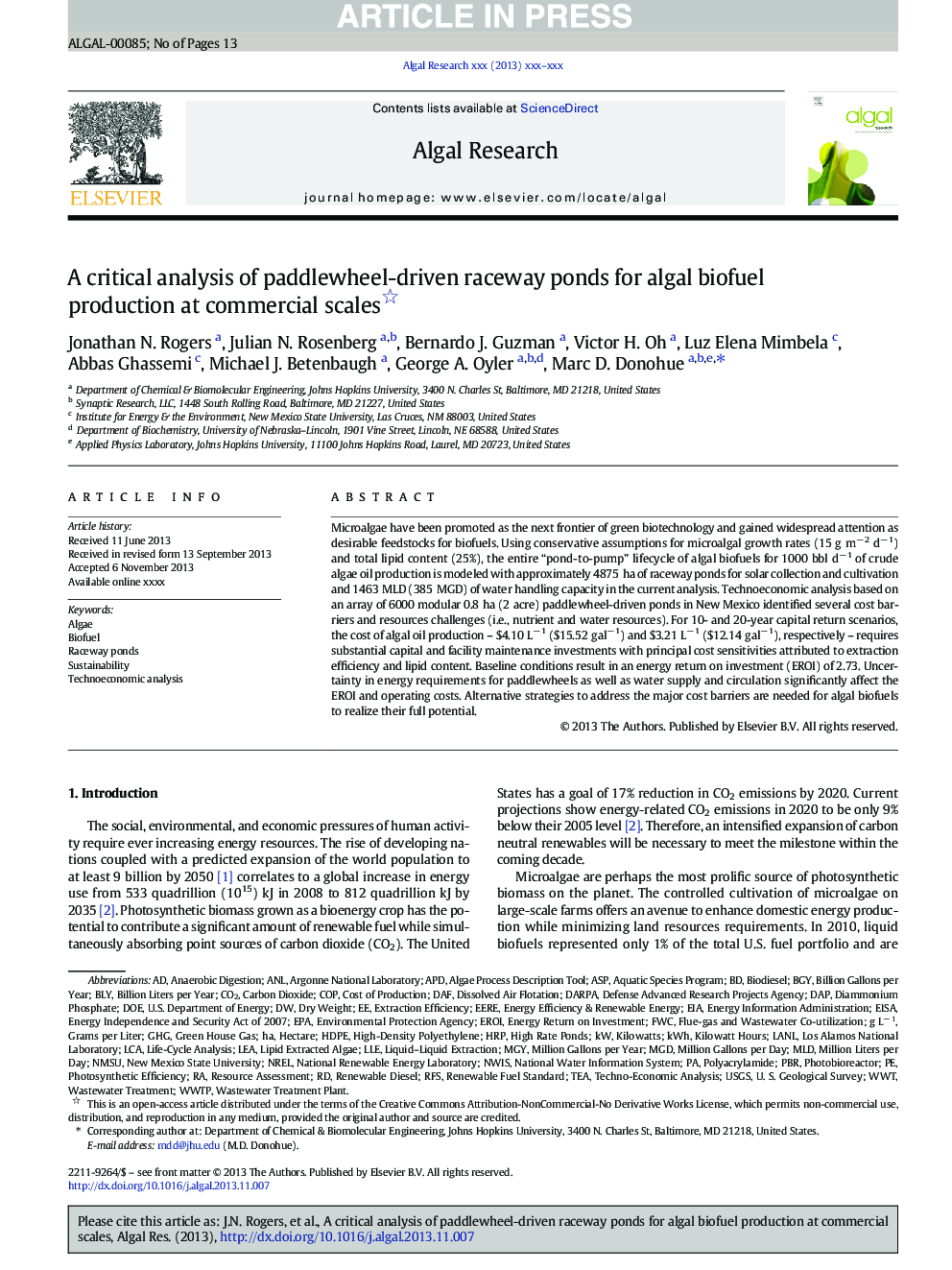| Article ID | Journal | Published Year | Pages | File Type |
|---|---|---|---|---|
| 8088485 | Algal Research | 2014 | 13 Pages |
Abstract
Microalgae have been promoted as the next frontier of green biotechnology and gained widespread attention as desirable feedstocks for biofuels. Using conservative assumptions for microalgal growth rates (15 g mâ 2 dâ 1) and total lipid content (25%), the entire “pond-to-pump” lifecycle of algal biofuels for 1000 bbl dâ 1 of crude algae oil production is modeled with approximately 4875 ha of raceway ponds for solar collection and cultivation and 1463 MLD (385 MGD) of water handling capacity in the current analysis. Technoeconomic analysis based on an array of 6000 modular 0.8 ha (2 acre) paddlewheel-driven ponds in New Mexico identified several cost barriers and resources challenges (i.e., nutrient and water resources). For 10- and 20-year capital return scenarios, the cost of algal oil production - $4.10 Lâ 1 ($15.52 galâ 1) and $3.21 Lâ 1 ($12.14 galâ 1), respectively - requires substantial capital and facility maintenance investments with principal cost sensitivities attributed to extraction efficiency and lipid content. Baseline conditions result in an energy return on investment (EROI) of 2.73. Uncertainty in energy requirements for paddlewheels as well as water supply and circulation significantly affect the EROI and operating costs. Alternative strategies to address the major cost barriers are needed for algal biofuels to realize their full potential.
Keywords
USGSEISARFSASPPBRDAPEPALANLLEADAFMLDHRPAPDMGDFWCWWTANLNRELkilowattsMGYmillion gallons per dayEEREDOEWWTPCOPLLEGHGHDPEPolyacrylamideEROIArgonne National LaboratoryNational Renewable Energy LaboratoryLos Alamos National LaboratoryEnvironmental Protection AgencyDefense Advanced Research Projects AgencyEnergy information administrationResource assessmentLCARenewable Fuel StandardLiquid–liquid extractionRaceway pondsEIAenergy return on investmentExtraction efficiencyBiodieselTechnoeconomic analysisTechno-economic analysisLife-cycle analysisWastewater treatment plantWastewater treatmentAlgaeDARPAdiammonium phosphateRenewable dieselCarbon dioxideBiofuelPhotobioreactordissolved air flotationLipid extracted algaeCost of productionAnaerobic digestionhectareU.S. Department of Energydry weightSustainabilityHigh-density polyethyleneTEAPhotosynthetic efficiencyCO2kWhGreen house gas
Related Topics
Physical Sciences and Engineering
Energy
Renewable Energy, Sustainability and the Environment
Authors
Jonathan N. Rogers, Julian N. Rosenberg, Bernardo J. Guzman, Victor H. Oh, Luz Elena Mimbela, Abbas Ghassemi, Michael J. Betenbaugh, George A. Oyler, Marc D. Donohue,
